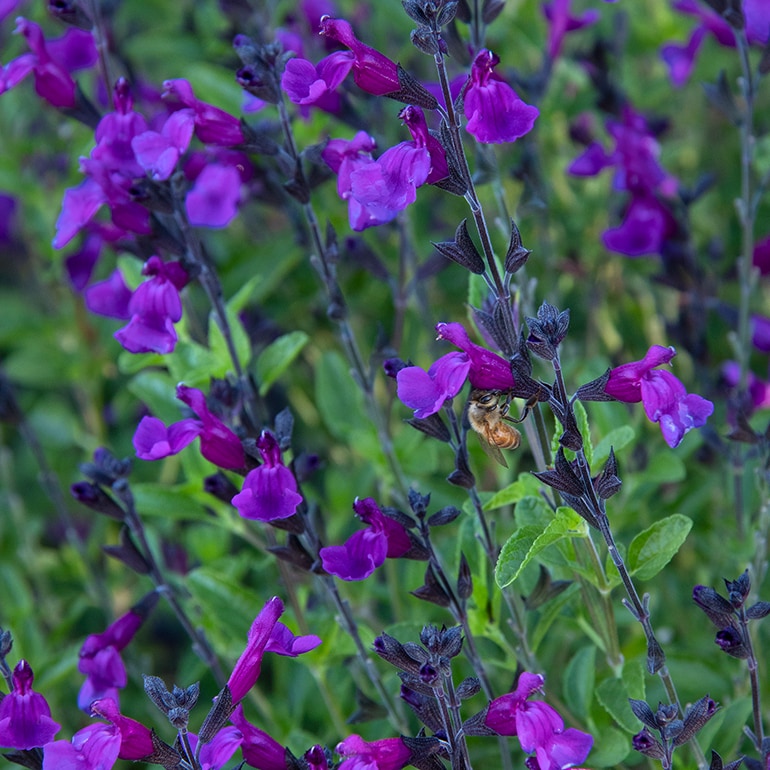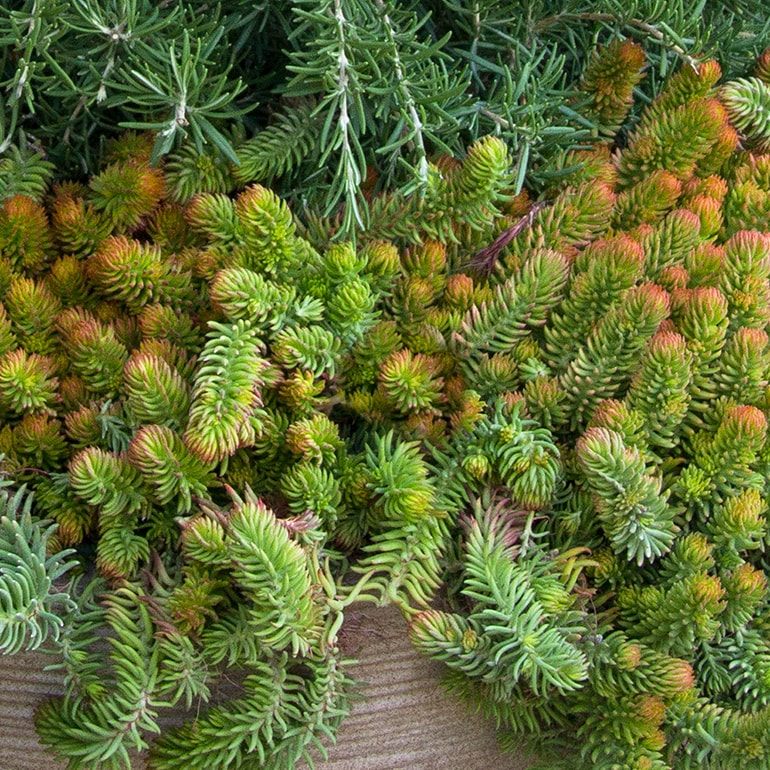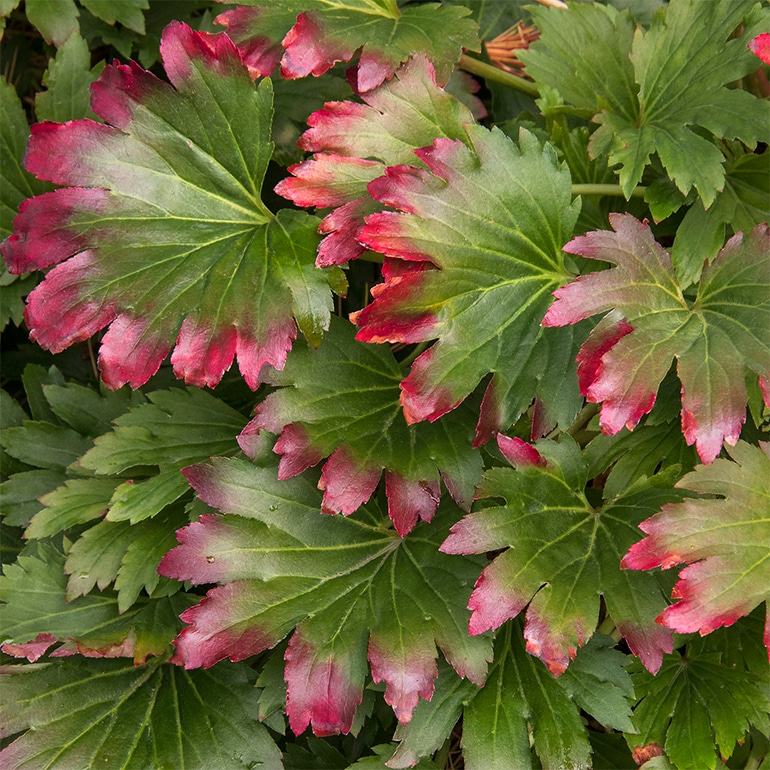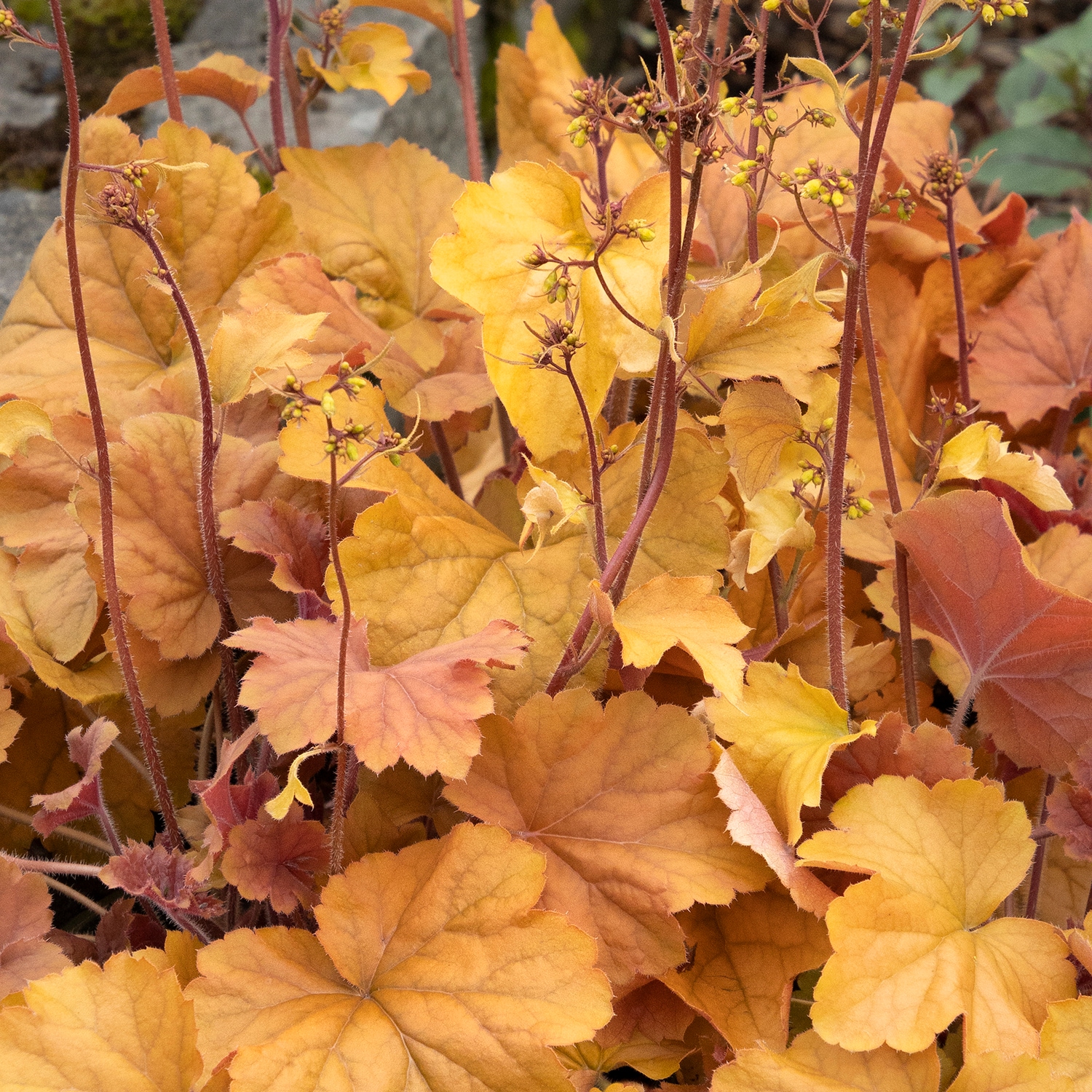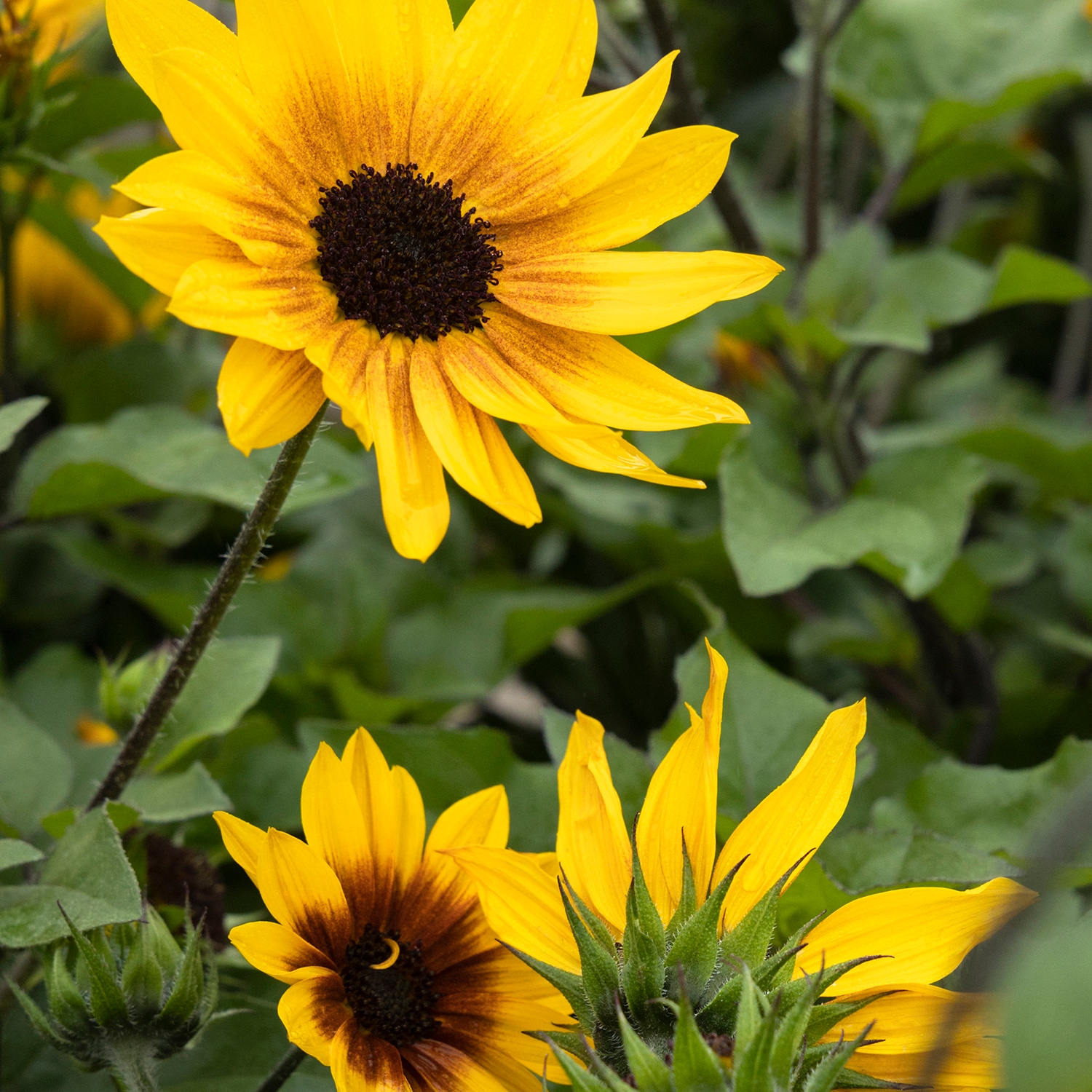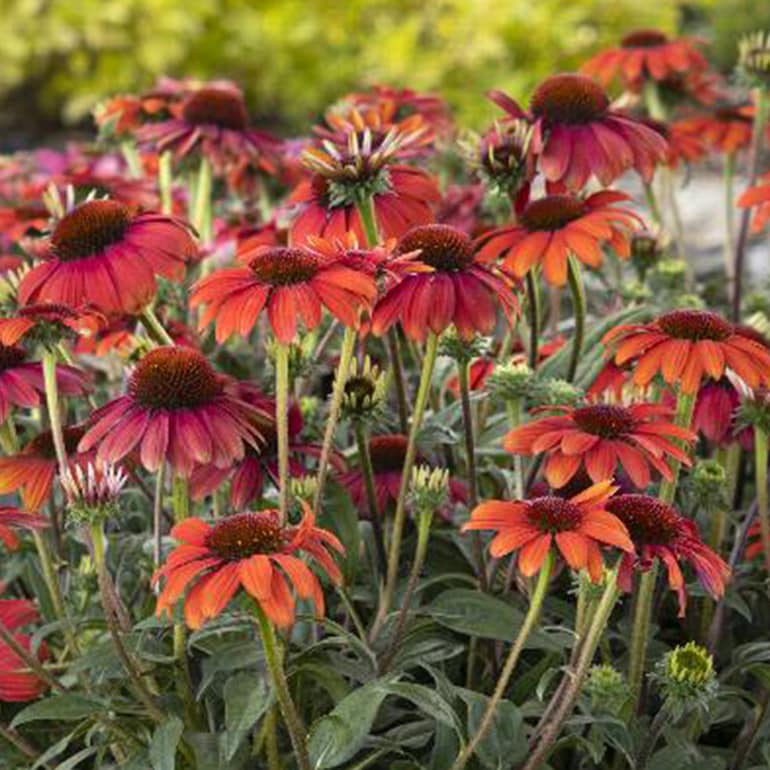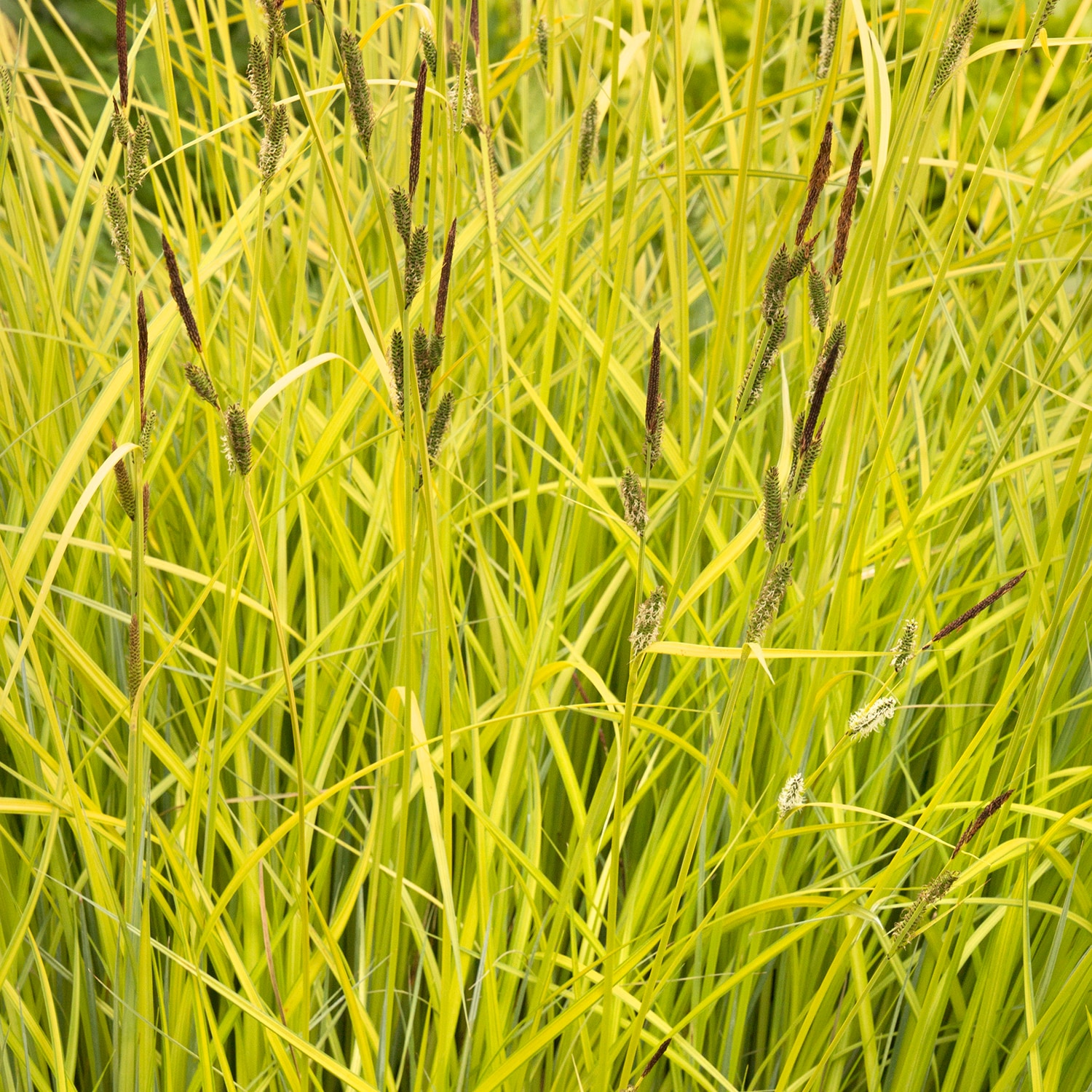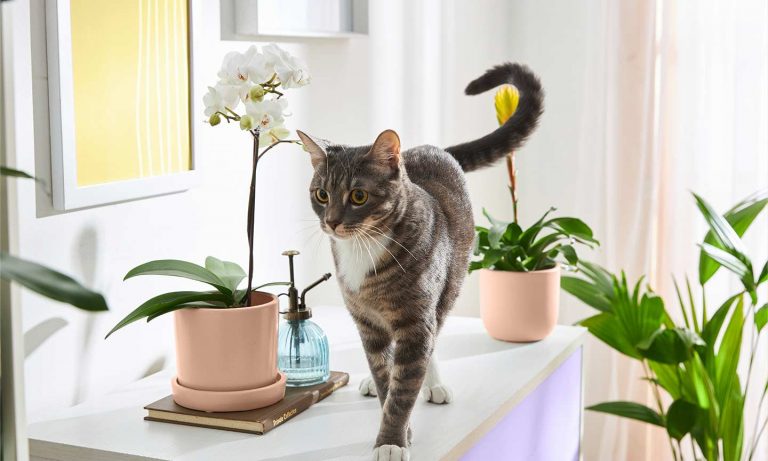Container gardening has never been more popular, and designing a pet-friendly container garden is easy with these five "recipes" from the plant experts at Monrovia.
What do we mean by recipe? We mean a mix of plants that serve a purpose or solve a common problem: helps the pollinators (save the bees!), is something you (and your pet!) can eat, or would work if your space doesn’t get a ton of sunlight. But we’re getting ahead of ourselves. First, let’s talk about why container gardens are our favorite, go-to gardening trend.
Container gardening is especially useful for those who have little space for a planted garden or who just enjoy being able to completely change out their garden from season to season, year to year. Growing plants in containers is an easy and affordable way to reap the benefits of gardening—the beauty, the mental health boost, contributing to a more sustainable planet—without the investment of time and funds required for a larger planted space.
To get you started we asked Georgia Clay, New Plants Manager at Monrovia, to identify five common wishes when it comes to gardening and provide a plant combination made of fuss-free, readily available plants that are safe for most pets. We asked her for some advice about a few things to consider before getting started with these pet-friendly container garden recipes. Ask yourself these questions:
- Space: How much room do you have for a container garden? Plants typically perform better is a larger sized pot (which also means you have to water less often) so plan for this requirement.
- Light: Plant labels specify that amount of sunlight a specific plant requires to thrive and grow to its best size, shape and, in the case of flowering plants, amount, density of color and size of blooms. Know your light conditions before selecting plants.
- Zone: USDA Plant Hardiness Zone Map is the standard by which gardeners and growers can determine which plants are most likely to thrive at a location. You can find your zone here and then refer to the plant tag to see if it will work in your area.
Got that? Once you have this information, it's time to head to a garden center and stock up on plants. Use these pet-friendly container garden recipes or find others that you love. Be sure every plant you purchase is safe for pets. Here are complete guides to safe plants for dogs and safe plants for cats. If you are unsure, please ask a garden center staffer for help.
To give you even more reasons to use these pet-friendly container garden recipes, we asked Georgia for some insights into each. See each "recipe" for her useful advice.
Five Fuss-Free, Problem-Solving, Pet-Safe Garden Container "Recipes"
Bees, Butterflies and Birds Love This Combo
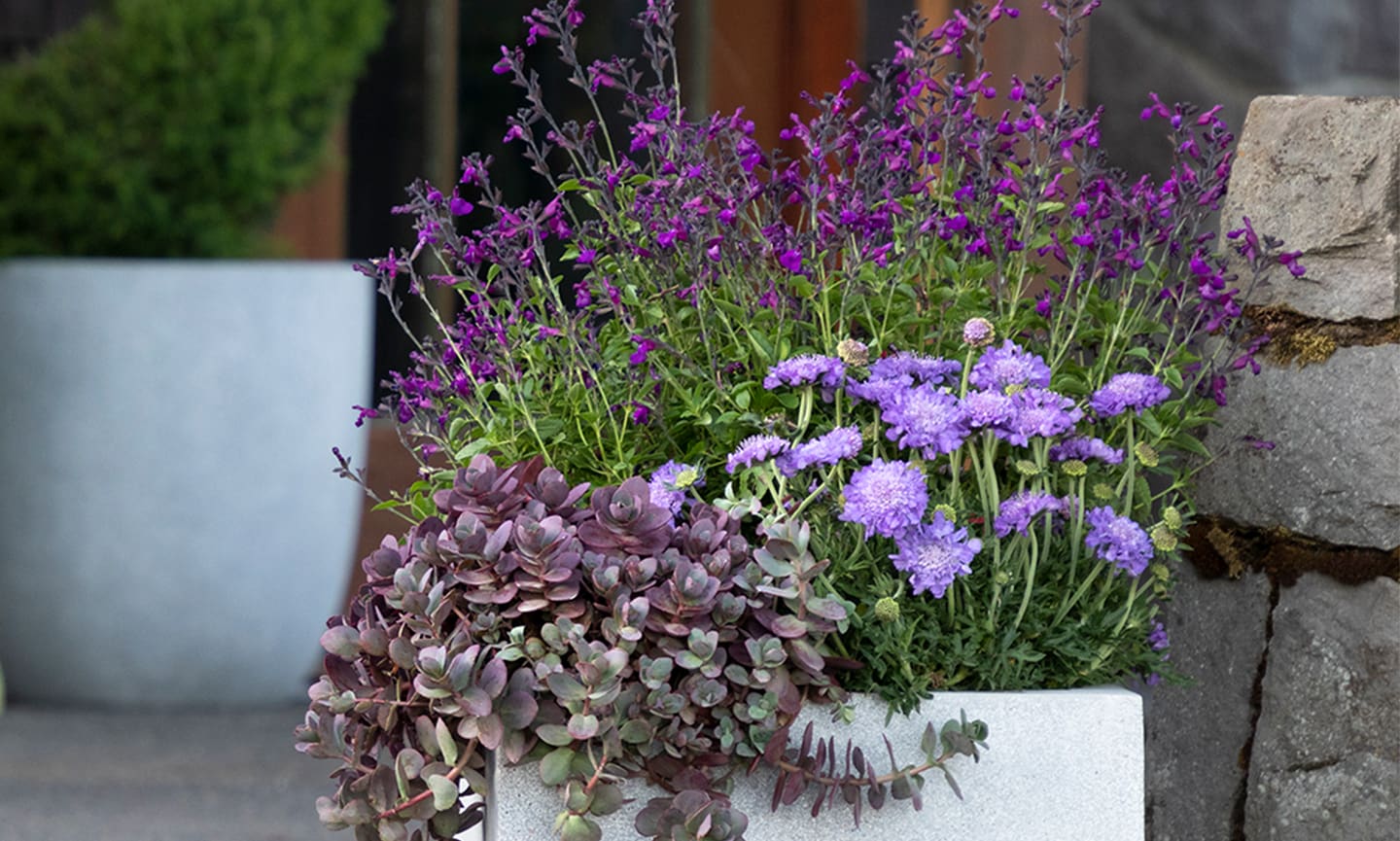
"We are all aware that our population of pollinators--those creatures who do the work of moving pollen from one plant to the next, a process that must occur for the the plant to become fertilized and produce fruits, seeds, and young plants--is in trouble, but you can help," says Georgia. "By planting even one pot with a few plants that attract and sustain pollinators you can impact not just your own yard, but contribute to the larger global solution. When it comes to pollinators, every plant we put into the environment adds up."
This pretty combination of rich purples blooms throughout summer well into early fall when pollinators are especially in need of food, and does best in full sun with regular water. Other pet-safe plants to consider for attracting pollinators include coneflowers, sunflowers, asters, bee balm and Joe Pye weed.
More information on pollinator-pleasing plants for your garden can be found here. (Note: not all plants found in this article are pet safe.)
These Drought-Resistant Plants Can Take the Heat
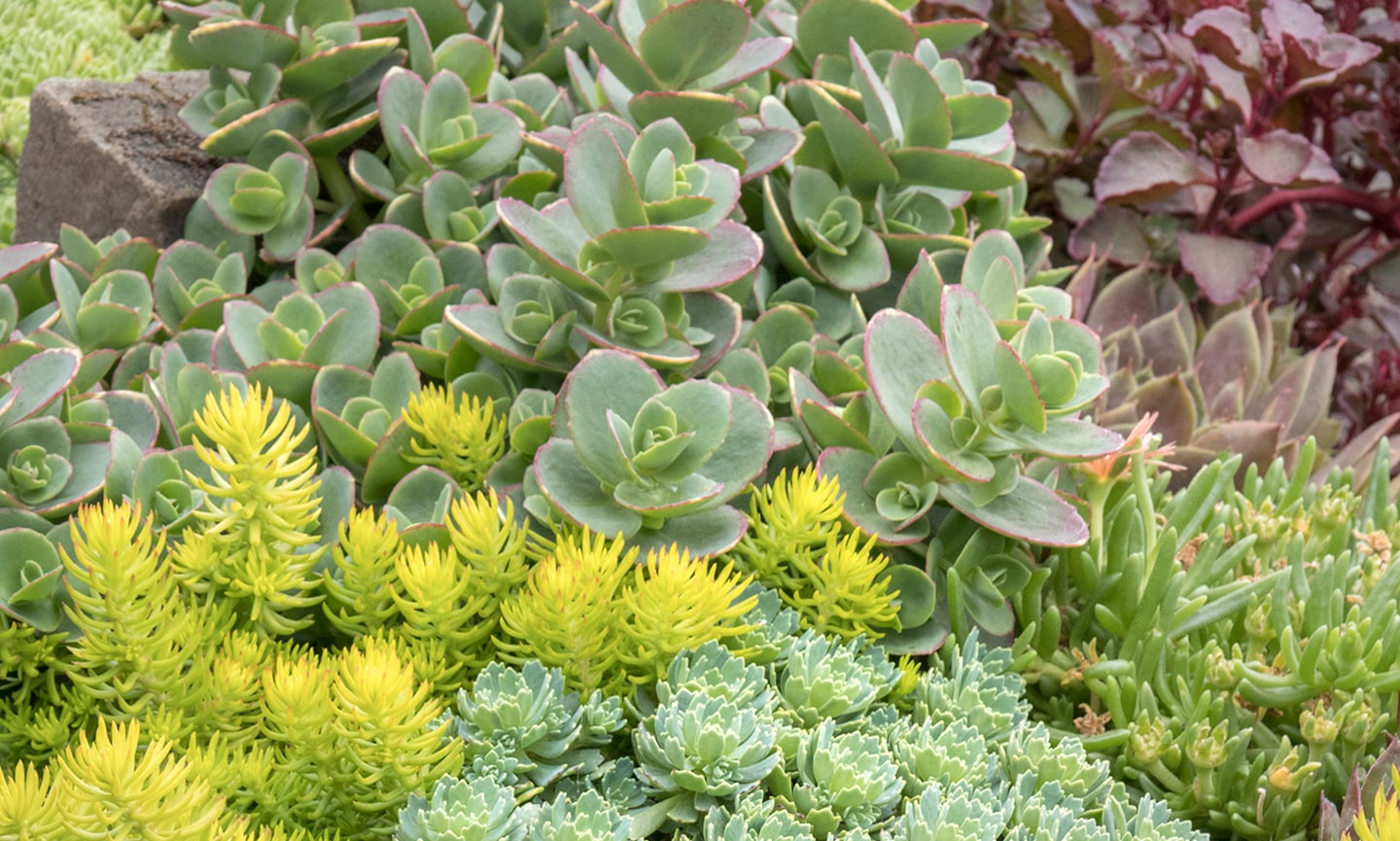
"Hotter and longer summers are becoming the norm in many parts of the country. Couple that with less time for gardening (hey, we're busy too) and let's face it, a love for quirky gorgeousness, and we're all about finding spectacular plants that are also not needy," shares Georgia. "Like all plants, you will still need good soil and a source of regular water, but we're talking minutes of attention per week!"
So, on her advice, we turn to sedums and succulents, those fleshy, colorful wonders that grow in full sun with only the barest of tending. While you can hew to one hue, we love mixing it up with a range of tones that stand up to the summer's direct and brilliant sun rays. Other excellent water wise pet-safe choices for growing in containers include daylily, lavender, and agastache. (Note--many lilies such as Asiatic or Oriental varieties are NOT pet safe. Stick with daylily, please.)
More information about designing with succulents and other low water need plants for your garden containers can be found here. (Note: not all plants found in this article are pet safe.)
Your Garden of Earthly Edible Delights
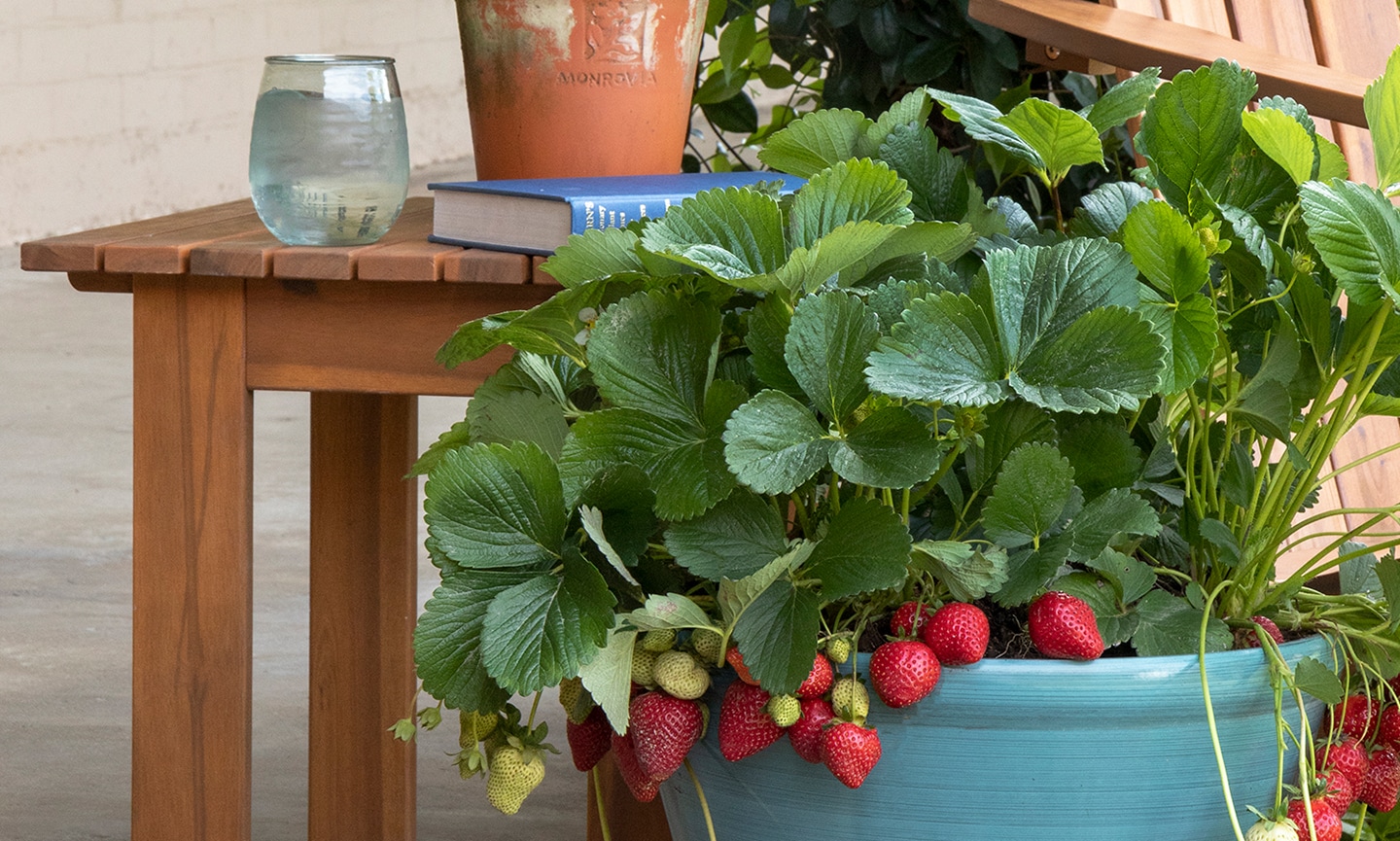
While not all plants with edible fruits and leaves are suitable for plants (we're looking at you grapes, garlic, onions, chives, mushrooms, un-ripe tomatoes and cherries in particular), there are plenty that are easy to grow and perfectly safe in moderation if your pet decides to help themselves to a tasty snack.
According to Georgia, most edibles do best in full sun with regular water and the best containers (we think) are those that mix perennials like rosemary, fruiting shrubs like blueberries and other woody herbs with annuals such as strawberries and tender herbs such as basil and parsley. "And here's the best tip when it comes to growing edibles—the more you harvest the more your plant will produce. So pick, snip and clip often," she says.
More information about designing with edible plants for your garden containers can be found here. (Warning: Not all plants found in this article are pet safe.)
Yes, You Can Have Color in a Shady Spot

When it comes to "shade" it can be a bit of a challenge to know what are your exact light conditions. You need this information so you are selecting the best plants for your conditions.
According to Georgia, if you get almost no direct sunlight that's all-day or deep shade and yes, your choices are more limited. If you get shade in the morning or the afternoon but not both, that's part-day shade and you have more options. If you get all day natural light but its filtered or indirect, that's partial sun. Here too, you have more options. To understand what light you are dealing with, watch the movement of the sun over the course of a day and then take those findings to a local garden center for help with the right plants.
This painterly combination will thrive in partial shade as long as it gets at least 6 hours per day of light. Other excellent pet-safe choices for spaces that get a least partial sunlight for a period of the day include astilbe, camellia, columbine and some ferns (please ask your garden center about your specific variety.) Hostas are NOT a good choice.
More information about designing with shade-living plants for your garden containers can be found here. (Note: not all plants found in this article are pet safe.)
Non-Stop Color Changes Everything

Vase-worthy blooms with scent, color and form to swoon over in a potted garden or to clip and bring indoors for #dreamlife IG posts are why many of us want to garden in the first place. No one is likely immune to the allure of a romantic flowery garden and the good news is that there are plenty of options if you have pets.
To get the best results, Georgia advises that most plants that make lots of flowers over a long season are going to need full sun, which means at least 6 to 8 hours of direct sun and regular water. They will also require you to deadhead (pinch off the spent blooms just below the the head) to encourage more flowers. (We like to do this chore in the AM with a coffee or PM with a cocktail!)
This combination is all about large flowers softened with the breezy movement of a grass. Other good choices for planters include roses, coreopsis, catmint, lavender, canna lily, and annuals such as cosmos, petunia and Gerber daisies. Note, we also love peonies, but they are not recommended where pets are likely to nibble.
More information about designing with full sun flowering plants for your garden containers can be found here. (Note: not all plants found in this article are pet safe.)
Tips and Tricks for Pet-Friendly Container Gardening
- Pot Size: Most plants need to be repotted once a year to ensure their roots can keep growing and taking in nutrients. If you see roots growing out of the drainage holes on the bottom of your plant, it's time for a repotting.
- Watering: Err on the side of underwatering. Most plants can handle drying out a bit, but few plants can handle soaking in water which can cause root rot. When identifying an ideal watering schedule, consider the heat, humidity, soil type, container type and presence of drainage holes.
- Fertilizers: Unlike plants in the ground, plants grown in containers depend on you for their nutrients beyond what they can take up from excellent quality potting soil. Plan on giving them a hearty meal of balanced organic fertilizer in spring with additional monthly snacks throughout the growing season.
- Pests and Disease: Don't sleep on it when you spot visible pests or damage from pests as it will likely only get worse. Opt for non-toxic, pet-safe treatments you can find at a local garden center.
Fellow Pet Parent Tips
- If all your pleadings and "no" warnings are not working, consider topping planted surfaces with pebbles that are not comfy on little paws. This might stop cats from napping in your containers.
- Use red herrings and redirection items to turn your pet's attention elsewhere (chew toys, cat grass, anything that's more fun than toppling and/or trampling pots).
- If despite your efforts every planted container is catnip to your pets, you gotta get them up and out of reach. Elevate your plants in hanging pots or on tall surfaces.
- Best advice? Plant sturdy, pet-safe specimens in heavy weighted containers and welcome pets into your wonderful potted garden!
Final Thought: When in Doubt?

Ready to start planning your dream garden using our pet-friendly container garden recipes? For more plant info, including expert advice on gardening tips, free guides and live interactive webinars, sign up for Monrovia’s newsletter or check out Monrovia’s Be Inspired blog. (We especially love their story about how one homeowner created a wonderful dog-friendly backyard--find that here.)
Monrovia plants can be found at garden centers or Lowe's stores nationwide. Need help finding your local garden center? Here's a useful link.
More Pet-Safe Gardening Tips
Share:

